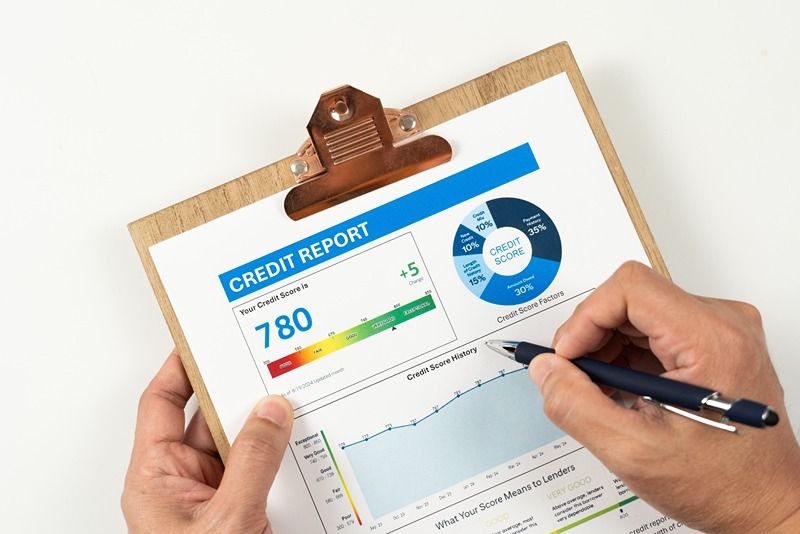The Indian micro, small and medium enterprises (MSME) sector has long been a pillar of the national economy. Contributing around 30% to India’s GDP, accounting for nearly half of its exports, and employing over 110 million people, MSMEs are fundamental to India’s development aspirations. Yet, despite their scale, many face chronic issues related to formal credit access. In an attempt to unlock greater credit flow and reduce administrative complexity, the government overhauled the classification norms in 2020. This blog unpacks the new criteria and evaluates its practical impact on credit eligibility, especially for MSMEs in the manufacturing and construction sectors.
Why this classification still matters in 2025
Although the revised MSME classification was introduced in July 2020, its implications remain deeply relevant in 2025. The new definition is not a temporary measure but a structural shift that continues to underpin policies, lending frameworks, and digital compliance systems. It is still the official and operative framework adopted by all banks, NBFCs, and fintech platforms when assessing MSME creditworthiness. Moreover, a large number of eligible businesses are still unaware of how the classification benefits them, particularly in rural and semi-urban areas.
The classification also supports emerging trends like cash flow-based lending and digitally integrated credit assessment, allowing lenders to better serve enterprises using GST and Udyam data. With continued debates around raising thresholds or introducing employment-linked incentives, understanding the current classification remains crucial not only for current credit access but also for anticipating future policy directions.
The shift from separate to unified classification
Until June 2020, MSMEs were defined differently for manufacturing and services. Manufacturing units were classified based on investment in plant and machinery, while service enterprises were classified by investment in equipment. This bifurcation created inconsistencies and operational hurdles, especially for hybrid enterprises that engaged in both activities. Moreover, inflation had eroded the relevance of these investment thresholds over time, excluding many enterprises that remained micro or small in nature by operational capacity.
The revised definition unified the criteria across both sectors and introduced a dual threshold system: investment and turnover. As of July 1, 2020, the classification is as follows:
Micro enterprises: Investment up to ₹1 crore and turnover up to ₹5 crore
Small enterprises: Investment up to ₹10 crore and turnover up to ₹50 crore
Medium enterprises: Investment up to ₹50 crore and turnover up to ₹250 crore
This overhaul was accompanied by a key reform: the introduction of self-declaration via the Udyam Registration portal, replacing the earlier documentation-heavy process involving EM-I/II or Udyog Aadhaar Memorandum.
Why the revision matters for credit access
Formal credit is the lifeblood of enterprise growth. Yet, according to the International Finance Corporation (IFC), Indian MSMEs face a credit gap exceeding ₹25 trillion. Banks and financial institutions often consider smaller enterprises as high-risk due to limited collateral, inconsistent bookkeeping and perceived lack of creditworthiness.
The revised classification, by raising the investment and turnover caps, expands the pool of enterprises that can qualify for priority sector lending (PSL). Previously, many firms remained excluded from MSME schemes simply because their investment had crossed the old limits; not due to operational size or revenue. Now, a medium-sized steel fabricator with ₹35 crore in investment and ₹210 crore in turnover remains eligible under the MSME umbrella. This recognition enables access to PSL, collateral-free loans under the Credit Guarantee Fund Trust for Micro and Small Enterprises (CGTMSE), and targeted interest subvention schemes.
Digital integration and improved compliance
The integration of Udyam Registration with Income Tax and GST networks ensures real-time data synchronisation. As of March 2024, over 3.2 crore MSMEs have registered under the new system, with approximately 95% classified as micro enterprises. This digital trail enhances credibility and streamlines eligibility assessment for banks and non-banking financial companies (NBFCs).
Moreover, the availability of turnover data via GST filings has made it easier for lenders to verify enterprise health. Lenders now increasingly use cash flow-based underwriting, supported by platforms such as the Account Aggregator framework and the Trade Receivables Discounting System (TReDS). MSMEs with strong supply chain linkages and timely GST compliance can demonstrate financial robustness, increasing their appeal to creditors.
Opportunities for manufacturing and construction MSMEs
For firms in manufacturing-heavy domains like steel fabrication, equipment leasing, or construction contracting, the new thresholds offer considerable room to grow without losing the benefits associated with MSME classification. A mid-size cement distribution unit that expands operations and scales revenue to ₹120 crore can still access MSME loan products. Previously, such growth risked disqualification and loss of benefits; a deterrent for strategic expansion.
Furthermore, the government's Emergency Credit Line Guarantee Scheme (ECLGS) for pandemic-hit businesses, extended multiple times since its inception in May 2020, has sanctioned loans worth over ₹3.6 lakh crore to more than 1.2 crore MSMEs by late 2023. These funds have allowed many to restart operations, manage working capital, and meet wage obligations. Revised classification ensured that many borderline enterprises did not fall through the cracks.
Sectoral disparities and credit absorption
Despite improved frameworks, ground-level absorption of credit remains uneven. Manufacturing MSMEs, due to their capital-intensive nature, tend to access larger ticket sizes than service enterprises. Yet, within manufacturing, micro enterprises often remain informally run, lacking audited financials or collateral. According to the SIDBI-TransUnion CIBIL MSME Pulse report (Q4 2023), the average ticket size for new MSME loans stood at ₹20 lakh, but 73% of borrowers in the micro category availed less than ₹10 lakh.
This underlines the need for lenders to expand their assessment tools. Bankers are gradually moving from asset-backed to behaviour-backed lending. Fintech-driven NBFCs, using AI-based credit models, have begun tapping first-time borrowers with promising payment histories, GST records, and digital footprint analysis.
Challenges and criticisms
The revised classification, while progressive, is not without limitations. Some stakeholders argue that the turnover thresholds, though generous, could incentivise informal practices to avoid crossing limits. There is also apprehension that larger entities could masquerade as MSMEs to access subsidised credit or preferential procurement, distorting the competitive landscape.
Moreover, awareness about Udyam Registration remains low in rural and semi-urban belts. A 2023 survey by CRISIL indicated that only 48% of MSMEs were aware of the registration process, with many perceiving it as bureaucratic despite its online interface. This highlights the need for grassroots-level sensitisation by industry bodies, chambers of commerce, and digital platform providers.
The road ahead: policy convergence and capacity building
For the revised MSME classification to translate into sustained credit flow, policy convergence is essential. The RBI, Ministry of MSME, and Department of Financial Services must align on lending targets, digital infrastructure integration, and grievance redressal. The expansion of the CGTMSE corpus and increased co-lending by public sector banks and fintech firms is already showing promise.
Capacity building at the MSME level is equally vital. Enterprises must be supported with digital onboarding, bookkeeping tools, and credit advisory services. Initiatives like JSW One MSME’s digital marketplace, which integrates procurement, inventory planning, logistics and credit access, are examples of how ecosystem platforms can bridge operational and financial gaps. By leveraging such tools, MSMEs can move from mere survival to strategic scaling.
Conclusion
The revised MSME classification is more than a technical correction; it is a structural enabler.
By acknowledging the realities of growth, it reduces the fear of losing MSME status due to scale. More importantly, it unlocks access to formal credit for a wider pool of enterprises, especially those that straddle the threshold between informal promise and formal potential. For manufacturing and construction MSMEs — often asset-heavy, cyclical, and capital-thirsty — the change provides an essential scaffold. The real challenge lies not in the classification, but in ensuring that credit outreach is inclusive, responsible, and growth-oriented.




 +91 7208055523
+91 7208055523
 Help & support
Help & support
